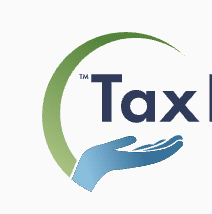
However, these states generate revenue through higher property and sales taxes. If you're considering a move for tax savings, comparing our best tax relief companies first helps you maximize your current situation.
This article breaks down each no-income-tax state and whether relocating actually saves you money. We'll show you the hidden costs and help you decide if the move makes financial sense.
Key Insights
- Nine US states charge no income tax, but they compensate through higher property and sales taxes.
- Wyoming and South Dakota offer the best overall tax environments, while Washington has higher total taxes despite no income tax.
- High earners and retirees benefit most, but rising housing costs can eliminate potential savings.
- Calculate your complete tax burden before moving—income tax savings don't guarantee lower overall costs.
What Is A No-Income Tax State?
A no-income tax state doesn't charge residents state income tax on their earnings, meaning you keep your entire paycheck without state deductions. You'll still pay federal income taxes, but you avoid the additional 3-13% that most states take from your salary, investment income, or business profits.
Remember that "no income tax" doesn't mean no taxes at all—these states still need revenue for essential services.
This also affects the average tax refund by state—residents of no-income tax states typically receive smaller refunds since less money is withheld from their paychecks throughout the year.
The 9 States Without Income Tax
1. Alaska
Alaska funds much of its government through oil revenue, allowing it to maintain no state income tax while even providing annual dividends to residents through the Permanent Fund.
The state's unique resource-based economy creates a different financial environment than other no-income-tax states, though residents face higher costs for goods and services due to geographic isolation.
2. Florida
Florida attracts millions of residents with its no-income-tax policy, warm climate, and lack of estate tax. The state relies heavily on sales taxes and tourism-related revenue to fund operations.
However, property insurance costs have increased by 43.2% from 2018 to 2023. Many homeowners now pay over $4,000 annually, with some cities exceeding $11,000. Hurricanes, rising construction costs, and legal disputes are driving up expenses and making homeownership less affordable for residents.
3. Nevada
Nevada's economy centers around tourism, gaming, and mining, which generates substantial revenue without income taxes. The state imposes no inheritance tax and maintains relatively low property tax rates.
Las Vegas and Reno drive the most economic activity, while rural areas face different economic realities and fewer job opportunities.
4. New Hampshire
New Hampshire previously taxed dividend and interest income, but eliminated this tax starting January 1, 2025, joining the ranks of true no-income-tax states.
The state maintains its revenue through property taxes and has no general sales tax, though it does tax prepared meals and lodging. This creates a unique tax environment compared to other no-income-tax states.
5. South Dakota
South Dakota ranks among the most tax-friendly states overall, with low property taxes (1.01% effective rate) and modest sales taxes (4.20% state rate).
The state's agricultural and tourism-based economy supports this low-tax environment, making it particularly attractive for retirees and small business owners seeking tax efficiency.
6. Tennessee
Tennessee eliminated its tax on investment income in 2021, completing its transition to a no-income-tax state. The state relies on sales taxes and property taxes for revenue, with sales tax rates varying significantly by locality.
Tennessee's growing economy, particularly around Nashville and Memphis, has attracted businesses and residents seeking tax advantages.
7. Texas
Texas maintains no state income tax through a combination of sales taxes, property taxes, and business taxes. The state's large economy, driven by energy, technology, and agriculture, supports this tax structure. However, property tax rates can be substantial, particularly in major metropolitan areas like Austin, Dallas, and Houston.
8. Washington
Despite having no income tax, Washington has the highest tax burden among no-income-tax states due to its 6.50% state sales tax rate and 0.76% property tax rate.
The state's economy relies heavily on technology companies, aerospace, and trade, but the high cost of living, particularly around Seattle, can offset tax savings.
9. Wyoming
Wyoming offers the most favorable tax environment among no-income-tax states, with just a 4% state sales tax rate and a 0.55% effective property tax rate.
The state's economy depends on energy production and tourism, though job opportunities may be more limited than in other no-income-tax states, particularly in diverse professional fields.
How Do No-Income Tax States Generate Revenue?
When states eliminate income tax, they find the money elsewhere through these main sources:
- Property taxes: Rates vary dramatically from Wyoming's 0.55% to Washington's 0.76%, potentially offsetting your income tax savings if you're a homeowner.
- Sales taxes: Hit every purchase you make, ranging from Wyoming's 4% to Washington's 6.50%, which adds up fast on daily expenses.
- Industry-specific taxes: Nevada relies on gaming and tourism taxes, while Alaska uses oil revenue, creating budget risks when these industries struggle.
- Various fees: Car registration, business licenses, and utility taxes help fill budget gaps left by missing income tax revenue.
The exact mix varies dramatically between states, which is why your potential savings can differ depending on where you move.
Advantages and Disadvantages of Living in a No-Income-Tax State
Pros of Living in States With No Income Tax
These are the advantages you should consider for living in a no-income tax state:
- Higher take-home pay: Keep more of your paycheck without state income tax deductions.
- Simpler tax filing: No state income tax forms to complete during tax season.
- Business-friendly environment: Many states also offer low corporate taxes, encouraging business growth.
- Attract companies: Business-friendly policies can create more job opportunities in the area.
Cons of Living in States With No Income Tax
It's also important to be aware of the disadvantages:
- Higher property taxes: Many states compensate with elevated property tax rates that can offset income tax savings.
- Increased sales taxes: Daily purchases cost more due to higher state and local sales tax rates.
- Rising housing costs: Popular tax-free states often see rapid home price increases that erode benefits.
- Reduced public services: Schools and infrastructure may receive less funding without income tax revenue.
Who Benefits Most In No-Income Tax States?
- High-income professionals: If you're making $100,000+ annually, avoiding a 5-10% state income tax means keeping thousands more each year.
- Retirees: Your pension, 401(k) withdrawals, and other retirement income stay untaxed at the state level, maximizing your fixed income.
- Business owners: You save on both personal income taxes and often pay lower corporate rates, leaving more capital to reinvest in your business.
Beyond the tax savings, you'll also enjoy simpler tax filing without state income tax forms and avoid complicated multi-state tax situations if you work across state lines.
Is Moving to a No-Income-Tax State Right for You?
Calculate Your Complete Tax Picture
Start by calculating your total tax burden, including property taxes, sales taxes, and any investment taxes you might face in your target state. Compare this to your current total tax obligation to understand real savings potential.
Key Factors to Evaluate Before Moving To A No-Income Tax State
- Cost of living: Housing, utilities, groceries, and services often cost more in popular no-income-tax states.
- Job opportunities: Career prospects vary significantly between states and may impact long-term earning potential.
- Quality of schools: Public education funding may be lower in states without income tax revenue.
- Public services: Infrastructure and government services could be limited compared to income-tax states.
- State's economic health: Overall financial stability affects future tax policy and service quality.
Special Considerations For Different Groups In No-Income Tax States
Many of these states have limited job opportunities in certain fields, so research your industry's presence before committing to a move. Wyoming offers great tax breaks but fewer career options compared to Texas or Florida, which could impact your long-term earning potential.
Popular destinations like Florida and Texas have seen housing costs skyrocket due to population growth. The money you save on taxes might disappear into higher rent or mortgage payments, so consider looking at smaller cities or rural areas for better deals.
Remote Worker Advantages In No Income Tax States
If you work remotely, you're in the perfect position to take advantage of no-income tax states. Since your job isn't tied to a specific location, you can focus on what matters most: cost of living, quality of life, and your total tax bill.
Remember to calculate how much you'll actually save on taxes, then compare that to higher living costs like housing, groceries, and utilities. Don't forget about tax deductions for remote workers, which can further reduce your tax burden.
Factors That Impact No Income Tax Advantage
Several factors could threaten these states' tax-free status or change their appeal:
- Budget pressures: Federal funding cuts, economic downturns, or massive infrastructure needs could force states to implement income taxes for the first time.
- Federal tax changes: While these typically affect all states equally, federal tax cuts could reduce the relative advantage of no-income-tax states, while federal tax increases could make them even more attractive.
Conclusion
Moving to a no-income tax state isn't automatically a path to savings—these states find revenue through higher property and sales taxes that can offset your income tax benefits.
While learning how to pay less taxes is important, the real key is analyzing your complete financial picture, including housing costs, job opportunities, and total tax burden.
Frequently Asked Questions
1. Which no-income-tax state has the lowest overall taxes?
Wyoming has the lowest overall taxes, with 0.55% property taxes and 4% sales taxes.
2. Do no-income-tax states have higher property taxes?
Yes, most compensate with higher property taxes, though rates vary from Wyoming's 0.55% to Washington's 0.76%.
3. Can moving to a no-income-tax state save me money?
It depends—higher property and sales taxes may offset your income tax savings depending on your situation.



